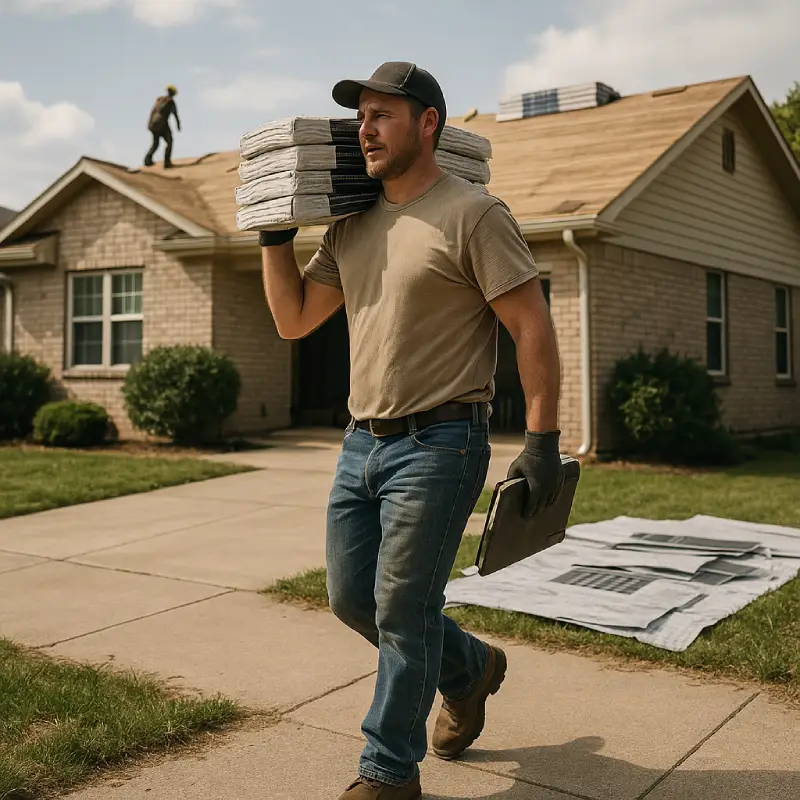Roofing restoration projects are crucial for maintaining the integrity, safety, and aesthetic appeal of a building. Understanding the various materials available for these restorations can significantly influence the outcome. Choosing the right materials affects durability and performance, and impacts maintenance requirements and overall costs.
As homeowners and builders consider restoration options, it is essential to weigh the advantages and challenges of each roofing material.
Asphalt Shingles
Asphalt shingles are a prevalent choice for residential roofs due to their affordability and ease of installation. They are composed of a fiberglass or organic mat covered with asphalt, providing a waterproof barrier.
Typically available in a variety of colors and styles, asphalt shingles can mimic the appearance of more expensive materials like slate or wood. Their versatility makes them suitable for various architectural styles, giving homeowners a wide range of design options.
Durability is a significant factor, with most asphalt shingles lasting around 20 to 30 years. They are susceptible to weather elements such as strong winds and hail. Proper installation can greatly enhance their resilience. Many roofing professionals can advise on the best practices for fitting asphalt shingles in different climates.
Metal Roofing
Metal roofs are gaining in popularity due to their exceptional longevity and low maintenance requirements. Made from aluminum, steel, or copper, metal roofing systems can withstand harsh weather conditions and resist elements like rust and corrosion.
They often boast life spans exceeding 50 years, making them an appealing long-term investment. Their reflective properties enhance energy efficiency by reducing cooling costs during hot months.
Homeowners can choose from various finishes that align with their design preferences. The versatility of metal roofs allows for installations on steep slopes, flat roofs, or intricate designs.
Those looking to learn more about installation and maintenance can click here for qualified roofing services that ensure optimal performance and safety. While initial costs may be higher compared to other materials, the long-term savings and durability can be well worth the investment.
Clay and Concrete Tiles
Clay and concrete tiles are renowned for their durability and aesthetic appeal, often found in Mediterranean or Spanish-style architecture. These materials are excellent for insulation, reducing energy costs in both extremes of temperature. Clay tiles create a classic, upscale appearance that often enhances property value, while concrete tiles come in various styles and colors, providing versatility for homeowners.
Though heavier than other roofing materials, with proper structural support, they can be an excellent option. Installation requires skilled labor, given the nature of the tiles and the need for precision in fitting. While they can last more than 50 years with appropriate care, maintenance may involve inspections and repairs to prevent cracks or leaks.
Overall, clay and concrete tiles can be an inspiring choice for those considering a touch of elegance in roofing restoration.
Wood Shakes and Shingles
Wood shakes and shingles are frequently chosen for their natural aesthetic and rich, warm appearance. They are typically made from cedar, pine, or redwood, offering various styles. The distinction lies in the manufacturing process, where shakes are usually thicker and more rustic than precision-cut shingles. Wood roofs can last anywhere from 30 to 50 years with regular maintenance, although they may be prone to rot or insect damage without proper care. Treatments can enhance their durability and weather resistance.
Their insulation properties contribute to energy efficiency. A key consideration for wood roofing is its fire rating, requiring treatment for enhanced safety in certain areas. Ultimately, wood shakes and shingles give homes a timeless, natural charm that can be hard to replicate with synthetic materials.
Single-Ply Membrane Roofing
This roofing type is commonly used in commercial applications, favored for its flexibility and ease of installation. Single-ply membranes consist primarily of synthetic materials like EPDM, TPO, or PVC. Each of these types has unique advantages, including different resistance capabilities and durability.
They can be adhered, mechanically fastened, or ballasted, offering options based on the building’s design and requirements. The lightweight nature simplifies installation and can reduce labor costs.
Single-ply roofing systems are effective in reflective properties, improving energy efficiency by minimizing heat absorption. These roofs have a life span of approximately 20 years, with some systems capable of longer durability with appropriate care. Perfect for low-slope applications, single-ply membrane roofing remains a popular choice in modern commercial projects.
Slate Roofing
Slate roofing is renowned for its aesthetic appeal and unmatched longevity, with a potential life span of over 100 years. An entirely natural material, slate offers a distinct and elegant appearance that can elevate the elegance of any building. Available in various colors and sizes, slate can match any architectural style’s specific needs, providing homeowners with a unique option for their projects.
The installation process is complex and labor-intensive, often requiring specialized skills, adding to overall costs. The weight of the slate necessitates a robust roof structure to bear the load. Though more expensive, the long-term investment pays off due to its durability, low maintenance requirements, and added property value. Regular inspections can help prevent issues such as cracks or dislodgment, ensuring longevity.
Choosing the right materials for roofing restoration is vital for ensuring durability, aesthetic appeal, and efficiency. Each material discussed has unique characteristics that can suit different architectural styles and requirements. Understanding the advantages and potential drawbacks can arm homeowners with the knowledge needed to make informed decisions.
